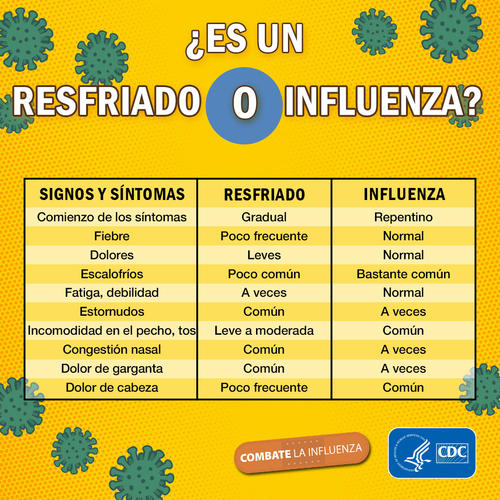The flu epidemic is getting worse, but many people often confuse the symptoms of this virus with those of the common flu.
Background: Viruses that could affect children as they return to school
In early 2024, Maria del Mar Ordoñez, head of respiratory disease surveillance at the Ministry of Public Health and Social Assistance (MPSAS), reported that respiratory viruses could be spreading at this time. Influenza A For the cold season.
Both the flu and the common cold infectious respiratory diseases, but they are caused by different viruses. According to the Centers for Disease Control and Prevention, influenza is caused only by influenza viruses (types A, B, C, and D), while colds can be caused by rhinoviruses, parainfluenza viruses, and seasonal coronaviruses, which are not Covid-19 (CDC).
The World Health Organization (WHO) reports that more than 1 billion cases of seasonal influenza occur each year, of which three to five million are severe, but in most cases people recover without treatment.
How are they different?
According to the same CDC, Flu is more serious than the common cold because symptoms are more severe and may Serious complications.
According to the Pan American Health Organization, influenza often affects Nose, throat, bronchi, and occasionally lungs. It usually lasts for a week and is characterized by the sudden onset of symptoms.

CDC table distinguishing between colds and flu. (Photo: Centers for Disease Control and Prevention)
flu symptoms
- Fever or feeling feverish and having chills
- cough
- sore throat
- runny nose
- nasal congestion
- muscle or body pain
- headaches and fatigue
Types of Flu
According to the Pan American Health Organization (PAHO), influenza viruses are classified as type A, which is divided into different subtypes. According to PAHO, “all known pandemics are caused by influenza A viruses.” .
Type B viruses are divided into B/Yamagata and B/Victoria lineages, while type C viruses are less frequently detected and cause mild infections. Type D mainly affects cattle.
The common flu, on the other hand, usually presents with sneezing and nasal congestion. Sometimes it can also cause fever and headache. It’s worth mentioning that these symptoms appear gradually, whereas symptoms of the flu appear suddenly.
suggestion
If you get the flu, it’s recommended to drink plenty of fluids, stay home to avoid infecting others, rest, and seek medical advice if symptoms worsen.
Dr. Arturo Melville, former chairman of the board of directors of Roosevelt Hospital and former associate chief of pediatrics, explained that the flu vaccine (a two-dose booster) is recommended for children under 9 years old, and the same for older children. Only a single dose.

